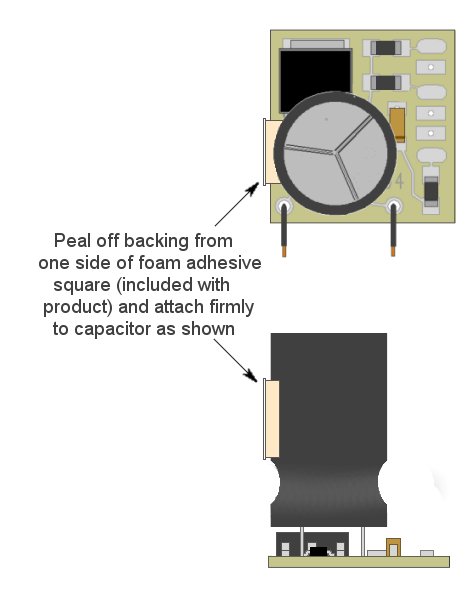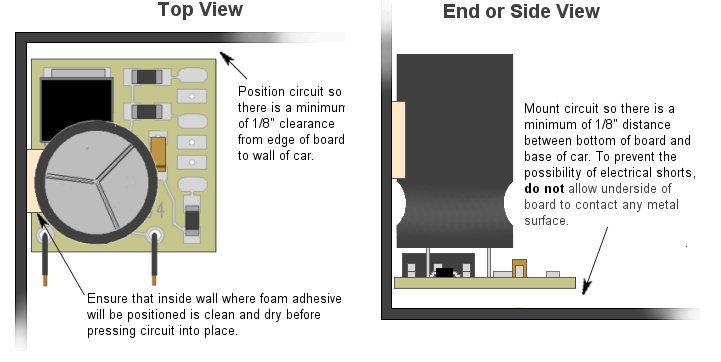Best viewed using:
Internet Explorer
or
Mozilla Firefox
Mounting the N8014-1, -2 or -3 Constant Voltage Circuit
Mounting the N8014-1 (capacitor installed)
Included with each N8104 is a small square of double-sided foam adhesive. Figure 1 below shows where to attach the adhesive to the part. Ensure that this adhesive pad is firmly pressed into position on the capacitor as shown.
Do not attach the adhesive pad to the bottom of the circuit board. This area of the board is designed as a heat sink for the circuit and can get warm (if input voltage is above 18-volts).

Figure 1
Figure 2 and 3 below show proper positioning of the circuit when placed inside a typical model railroad car.

Figure 2 Figure 3
The circuit could also be mounted sideways or even upside-down if available space necessitates.
Mounting the N8014-2 or -3 (capacitor not installed on board)
This version of the constant voltage circuit is useful where available space is very limited and the flicker control capacitor must be located remotely. Examples would be N-scale rolling stock, or smaller HO cars such as some Maintenance-of-Way (MOW) cars.
In the case of N-scale, track voltages (including DCC) do not exceed 13.5 volts, so the bottom surface (heat sink portion) of the circuit board will never get warm enough to compromise the bond of the foam adhesive mounting pad. In this case, the pad can be secured directly to the underside of the circuit board and the board can be mounted against the side or base (or even the roof) of the rolling stock. See Figure 4 below.

Figure 4
For limited-space HO rolling stock applications, track voltages can occasionally reach up to 18.5 volts. If this is the case, the bottom portion of the board can become slightly warm. In this situation, the foam pad can be attached, but to ensure there is no long-term softening of the adhesive bond, the circuit should be wrapped with a 1/2" wide piece of Kapton® tape and then the foam pad can be secured to the surface of that tape. Kapton® tape is specifically designed for high temperature applications and will be totally unaffected. The foam pad will adhere completely to the Kapton® surface.
© 2011 Ngineering





















